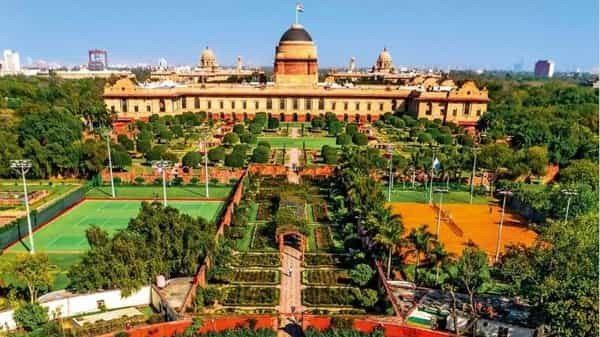History and Art and Culture
In News: The iconic Mughal Gardens at the Rashtrapati Bhavan (President’s House) in Delhi have been renamed. “The collective identity of all the gardens at Rashtrapati Bhavan will be ‘Amrit Udyan’.
- The gardens will open to the public on January 31
About Mughal Gardens

- In Babur Nama, Babur says that his favourite kind of garden is the Persian charbagh style (literally, four gardens).
- The charbagh structure was intended to create a representation of an earthly utopia – jannat – in which humans co-exist in perfect harmony with all elements of nature.
- Defined by its rectilinear layouts, divided in four equal sections, these gardens can be found across lands previously ruled by the Mughals.
- From the gardens surrounding Humanyun’s Tomb in Delhi to the Nishat Bagh in Srinagar, all are built in this style – giving them the moniker of Mughal Gardens.
- A defining feature of these gardens is the use of waterways, often to demarcate the various quadrants of the garden.
- These were not only crucial to maintain the flora of the garden, they also were an important part of its aesthetic. Fountains were often built, symbolising the “cycle of life.
- The gardeners of the Rashtrapati Bhavan have kept alive the tradition of nurturing the defining feature of the gardens — the multitude of rose varieties.
- They include Adora, Mrinalini, Taj Mahal, Eiffel Tower, Scentimental, Oklahoma (also called Black Rose), Black Lady, Blue Moon and Lady X.
- There are also roses named after personalities: Mother Teresa, Raja Ram Mohan Roy, Abraham Lincoln, Jawahar Lal Nehru, and Queen Elizabeth — not to forget Arjun and Bhim. The ingenious gardeners also introduced new, exotic varieties of flowers like birds of paradise, tulips and heliconia in 1998.
- For instance, C Rajagopalachari, the last Governor General of India, made a political statement when during a period of food shortage in the country, he himself ploughed the lands and dedicated a section of the garden to foodgrains.
- Today, the Nutrition Garden, popularly known as Dalikhana, stands in that spot, organically cultivating a variety of vegetables for consumption at the Rashtrapati Bhavan.
- President R Venkatraman added a cactus garden (he just liked cacti) and APJ Abdul Kalam added many theme-based gardens: from the musical garden to the spiritual garden.
History of Mughal gardens
- In 1911, the British decided to shift the Indian capital from Calcutta to Delhi.
- About 4,000 acres of land was acquired to construct the Viceroy’s House with Sir Edwin Lutyens being given the task of designing the building on Raisina Hill.
- Lutyens’ designs combined elements of classical European architecture with Indian styles, producing a unique aesthetic that defines Lutyens’ Delhi till date.
- Lady Hardinge, the wife of the then Viceroy, urged planners to create a Mughal-style garden.
- It is said that she was inspired by the book Gardens of the Great Mughals (1913) by Constance Villiers-Stuart as well as her visits to the Mughal gardens in Lahore and Srinagar.
Source: Indian Express
Previous Year Questions
Q.1) Who among the following Mughal Emperors shifted emphasis from illustrated manuscripts to album and individual portrait? (2019)
- Humayun
- Akbar
- Jahangir
- Shah Jahan











